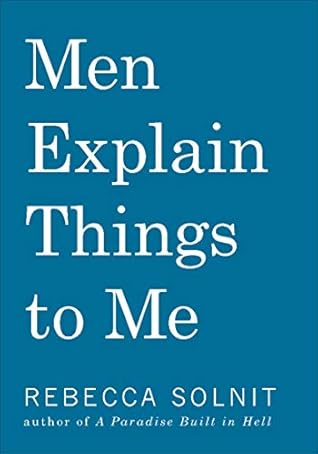More on this book
Community
Kindle Notes & Highlights
Every woman knows what I’m talking about. It’s the presumption that makes it hard, at times, for any woman in any field; that keeps women from speaking up and from being heard when they dare; that crushes young women into silence by indicating, the way harassment on the street does, that this is not their world. It trains us in self-doubt and self-limitation just as it exercises men’s unsupported overconfidence.
Lily Bretthauer liked this
Violence is one way to silence people, to deny their voice and their credibility, to assert your right to control over their right to exist.
Men explain things to me, still. And no man has ever apologized for explaining, wrongly, things that I know and they don’t. Not yet, but according to the actuarial tables, I may have another forty-something years to live, more or less, so it could happen. Though I’m not holding my breath.
Most women fight wars on two fronts, one for whatever the putative topic is and one simply for the right to speak, to have ideas, to be acknowledged to be in possession of facts and truths, to have value, to be a human being.
I think we would understand misogyny and violence against women even better if we looked at the abuse of power as a whole rather than treating domestic violence separately from rape and murder and harassment and intimidation, online and at home and in the workplace and in the streets; seen together, the pattern is clear).
“Women worldwide ages 15 through 44 are more likely to die or be maimed because of male violence than because of cancer, malaria, war and traffic accidents combined,” writes Nicholas D. Kristof, one of the few prominent figures to address the issue regularly.
There’s no good reason (and many bad reasons) colleges spend more time telling women how to survive predators than telling the other half of their students not to be predators.
So much for rape as a crime of passion—these are crimes of calculation and opportunism.)


